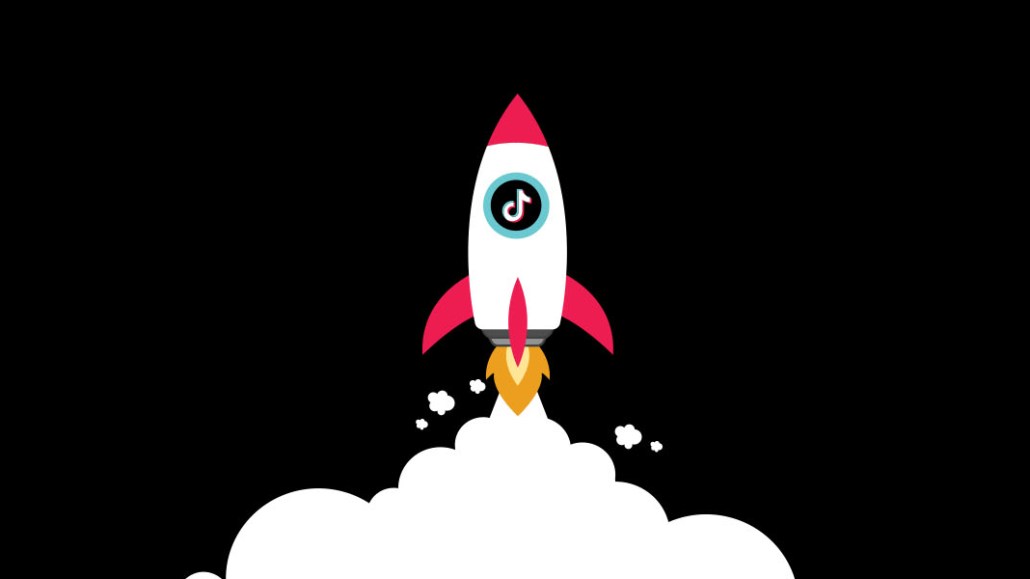Save 50% on a 3-month Digiday+ membership. Ends Dec 5.

Advertisers with beta access to TikTok’s self-serve ad platform are, for the most part, optimistic about the global media sensation’s attempts to reach marketplace parity as an ad-supported platform.
ByteDance’s TikTok knows it needs to grow up, primarily because it would be leaving money on the table by not making it easier for ad buyers to, well, buy advertising. The self-serve ad model, introduced last fall, gets high marks from advertisers for being relatively easy to use and increasing brand awareness. But it lacks robust targeting and an application programming interface critical for automated buying, and it offers inferior metrics compared to more mature platforms like Facebook.
“The platform has most of the bells and whistles of other self-serve social ad platforms,” said Carly Carson, director of social for PMG, but she added, it’s “missing a few key reporting metrics.”
TikTok would not comment on the existence of a self-serve ad model in beta.
“So far it’s been a challenge to drive really good performance on the platform,” said Asher Chester, director of performance marketing for Agency Within. Chester said he’s seen high engagement on his clients’ TikTok ads, but he added, “You’re not able to be as precise with targeting on TikTok as you are with most of the other platforms.”
Chester said having influencers or recognizable faces featured in ads or making ads that feature a hashtag challenge helps drive engagement. Any type of ad featuring content that seems native to TikTok performs better, he found.
Making it easier for advertisers to find influencers or for creators to work with directly on advertisements is something that TikTok is already working on with its Creator Marketplace, which is also in beta testing. To address the high bounce rates that her clients are experiencing, Carson said she wants to see how TikTok collaborates with brands to make the ad experience more seamless.
Ad position: web_incontent_pos1
Since last fall women’s apparel brand Ivory Ella has advertised on TikTok, and its ads are a combination of creator-driven content and merchandise-focused content. Creator-driven posts feature popular TikTok stars like Arianna Lee (@arianalee99) and Charli Elise (@charli_elise) sporting Ivory Ella clothing while lip-synching or dancing. The result: TikTok has become a top traffic referrer for the apparel company.
“I’m nervous about what will happen when all the advertisers figure it out,” said Rachel Bulla, who serves as client partnerships vp for Buckland Co, Ivory Ella’s agency. “The barrier of entry is super low. You can get a campaign up in a couple of minutes.” (So far, the biggest challenge Bulla has had with the self-serve ad model is having to refresh it often because of updates.)
Carson said she would like to see expanded targeting capabilities, such as the ability to target by using hashtags, and a more seamless, less manual customer-relationship-management integration option through an API. Bulla said the ability to track conversions is also something she would like to see improved.
The possibility of a more curated and brand-safe discovery feature on TikTok, similar to Snapchat’s Discover tab, also intrigued Carson and Bulla. Nonetheless, both said they hope that this would not detract from the seemingly random, algorithm-driven user experience for which TikTok is known.
“Part of what makes TikTok so great is that it feels very user driven,” Carson said. “I would hate to see the app become more commercialized. If the curated content can stay true to the highly creative nature of current TikTok content, it could win. But if it’s just a replica of other apps’ approaches to curated content, it might fall flat [with] TikTok users.”
Ad position: web_incontent_pos2
For TikTok, the opportunity to attract more advertisers and demonstrate that it’s much more than an app where people simply lip-sync or dance is immense. In 2019, it was downloaded more than 738 million times and grossed nearly $177 million worldwide, according to Sensor Tower. In both the App Store and on Google Play globally, TikTok was the second most-downloaded app in 2019, surpassed only by WhatsApp’s 849 million downloads.
“There will be a lot of brands that will hesitate because they don’t know how to use it and it’s not as trackable; that’s the first-mover disadvantage,” Chester said. “But having the right creative and making sure you show up in a way you’re confident in is really important.”
More in Marketing

Ulta, Best Buy and Adidas dominate AI holiday shopping mentions
The brands that are seeing the biggest boost from this shift in consumer behavior are some of the biggest retailers.

U.K. retailer Boots leads brand efforts to invest in ad creative’s data layer
For media dollars to make an impact, brands need ad creative that actually hits. More CMOs are investing in pre- and post-flight measurement.

‘AI is permeating everything we do’: How Guitar Center developed 2 AI tools this year
This summer, the company launched a chatbot called Rig Advisor to help customers find the right instruments and products.
Ad position: web_bfu
